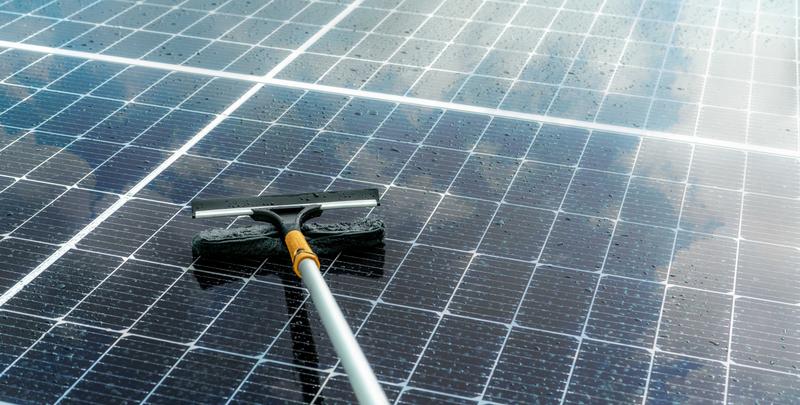
If you’re seeking a high-effectiveness
Why Photo voltaic Panel Cleaning Matters
Photo voltaic panels capture Strength at their ideal when clear. Dust, pollen, chook droppings, and smog reduce performance—in some cases by twenty% or even more. Regular cleansing will help sustain optimal performance, prolong panel daily life, and guard your financial investment.
Key Positive aspects:
- Improved Electricity output
- Reduced energy charges
- Extended panel lifespan
- Diminished danger of micro‑cracks as a consequence of thermal hotspots
Forms of Solar Cleaning Applications
Selecting the ideal Device depends on your setup, h2o availability, and desired usefulness. Types contain:
- H2o‑run solar brush techniques
- Moveable photo voltaic panel cleansing kit bundles
- Pure water cleaning devices
- Rotary photo voltaic brushes and extension poles
Water Powered Solar Brush Programs
These brushes hook up with a h2o source and spin although dispensing drinking water, combining cleaning and lubrication in one action. The end result: spotless panels without the need of scratching.
Important Characteristics:
- Built-in drinking water feed from the brush head
- Tender bristles safe for glass surfaces
- Rotary motion minimizes manual energy
- Mounts on extension poles for rooftop accessibility
Transportable Solar Panel Cleaning Package
An entire
- Brush head (fastened or rotating)
- Extension pole (adjustable lengths as many as six m)
- Hose adapters or swift‑hook up fittings
- Pure‑drinking water tank or filtration method
- Gentle microfiber towels or squeegees
- Non‑abrasive cleaning solution (if authorized)
Advantages of All-in-One particular Kits:
- Commence cleaning with minimal set up
- Compact for storage or journey
- Compatible with household or industrial solar arrays
Pure H2o Solar Cleansing Devices
These programs purify neighborhood water—taking away minerals and Grime—so it won’t depart scale or streaks. Pure water empowers professional-quality outcomes without chemical compounds.
How It Works:
- Pretreatment filtration (sediment, carbon, ion Trade)
- Last deionization or reverse‑osmosis phase
- Filtered water circulated as a result of brush for cleaning
- Residue‑free drying—no places or streaks remaining driving
Rotary Photo voltaic Brush & Extension Poles
For big photo voltaic arrays or commercial use, an influence-rotating head on a telescoping extension pole can make cleansing productive and safe.
Rewards:
- Much less Bodily effort, more rapidly protection
- Achieve roofs and floor‑mounted panels easily
- Adjustable shaft lengths for varying angles
- Common brief‑connect tricks for accessories
Target Protection & Best Procedures
Cleaning photo voltaic panels will involve heights and slippery surfaces—safety 1st:
- Use non‑conductive extension poles
- Stay clear of pressure washers that will crack glass
- Get the job done early or late to avoid glare and heat
- Put on grips and slip-resistant shoes
- Observe neighborhood drinking water‑use regulations or limits
Move‑by‑Move Cleansing Plan
- Turn off the photo voltaic inverter or be certain system is deactivated
- Rinse panels with reduced‑pressure water
- Utilize a brush (or photo voltaic brush package) with drinking water feed
- Scrub gently in overlapping, linear passes
- Rinse extensively with thoroughly clean water
- Dry with microfiber squeegee or gentle towel—provided that desired
Deciding on the Suitable Photo voltaic Panel Cleaning Tool
Think about your set up and also your drinking water accessibility:
Routine maintenance & Care Ideas
- Flush hose and brush following Each individual use
- Retailer dry, thoroughly clean, and far from UV exposure
- Swap worn brush heads—and check bristle softness
- Inspect seals and connectors for leaks
- Change or clean filters in pure‑drinking water programs routinely
Eco-Friendly Cleansing Positive aspects
Right cleansing prolongs photo voltaic panel effectiveness and cuts down energy squander. Working with h2o by yourself—devoid of soaps or chemical substances—aids protect area ecology and avoids runoff air pollution.
How Photo voltaic Panel Cleansing Impacts ROI
Smart maintenance making use of good quality brushes and kits retains process performance topped up, lessening the payback interval and maximizing Electrical power generate over time.
Cost Things to consider & Benefit
- Drinking water‑driven solar brushes are Value-effective and durable
- Pure water programs have to have upfront financial investment but offer consistent, location‑free of charge cleaning
- Rotary brush kits Raise productiveness—worth it for giant installations
- Do-it-yourself kits conserve labor charges; Skilled services Value more but release your time
Widespread Utilizes of Solar Panel Brushes
- Residential rooftops
- Business solar farms
- RV or mobile installations
- Photo voltaic carports
- BIPV segments (making‑built-in photovoltaics)
Client Recommendations & Use Situations
“This photo voltaic panel cleaning brush built a apparent variance inside of minutes—dust long gone, no streaks, and our output enhanced!”
“Upgrading to a water‑run photo voltaic brush saved several hours of scrubbing. Combined with a pure drinking water system, the panels seemed brand-new.”
FAQs About Photo voltaic Panel Cleaning
How frequently ought to panels be cleaned?
Each six to 12 months, according to your local weather—far more typically in dusty or pollen-hefty areas.
Can rain cleanse solar panels?
Rain helps but doesn’t reduce Grime buildup or film levels—handbook cleaning yields better performance.
Can I use faucet drinking water?
Faucet h2o may well leave mineral residue. A
Can cleansing damage panels?
Only if abrasive resources or large-strain washers are utilised. Generally use tender bristles, small-pressure, and follow manufacturer recommendations.
Pro Strategies for Photo voltaic Panel Entrepreneurs
- Clean up early early morning or evening to prevent thermal tension
- Keep track of output information—if overall performance drops, clean panels
- Continue to keep panels angled—standing h2o promotes algae growth if remaining far too prolonged
- Rotate brush heads periodically to maintain even wear
Summary: A Brush for Every Need
Whether you’re on the lookout for a value-efficient solar brush solar panel cleansing brush, ready to speculate in a full
Check out the entire line of brushes and accessories made especially for photo voltaic cleansing at Water Powered Solar Brush suppliers, and elevate your photo voltaic routine maintenance routine these days.